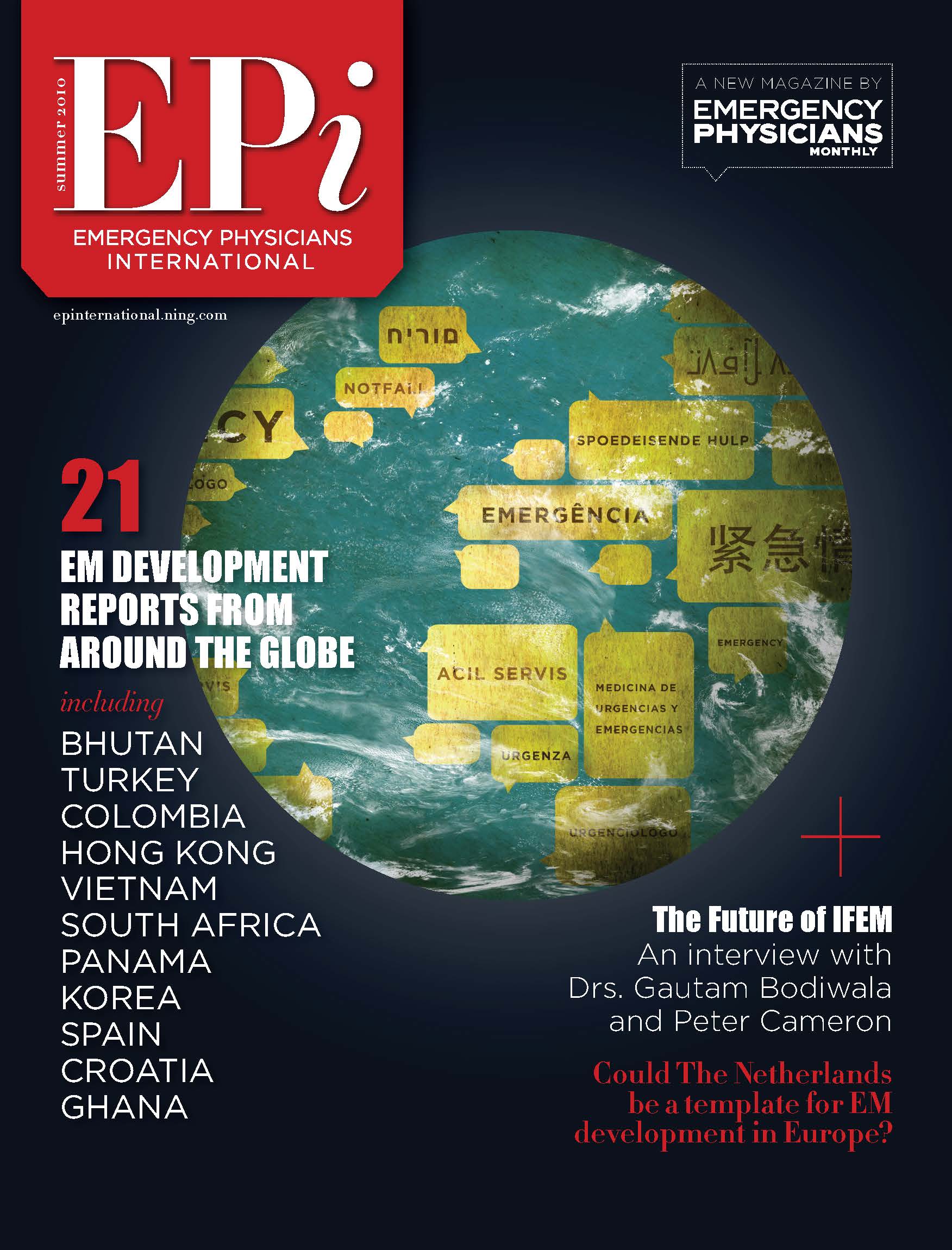The Next Pandemic – An Australian Perspective
Sitting in my locked down and isolated city of Melbourne, where fortunately COVID 19 cases and deaths have been few, my mind turns to thinking about a post COVID 19 world. I have experienced emergency medicine practice during two other corona virus epidemics, when I worked in Hong Kong during SARS and Qatar during MERS. The response to COVID 19 has been vastly different.
In Melbourne, we have endured more days of lockdown than most cities in the world (more than 250 days), with the result that our hospital systems have not been over-run (yet) and a small number of mostly older people or people with comorbidities have died from COVID 19. However, for much of the last eighteen months we have not been able to see loved ones, we have not been allowed to travel overseas, schools have been closed, business and entertainment venues have been closed, and there have been few social gatherings. There have even been night-time curfews in peace-time. A state of emergency, with associated limitations of civil liberty has been in place for over one year. The government has supported businesses and individuals with financial/social support, accumulating one of the biggest government debts in our history at a state/national level, other than during world wars.
One of the interesting aspects of this pandemic, has been the inability of pundits to model the pandemic case numbers and predict the need for hospital beds and patient support. Ballooning numbers, never seemed to match what modellers predicted, and often inexplicably plateaued, well before the expected peaks. The models, led to request for thousands of ventilators, temporary mass hospital sites (that weren’t used) and many other outcomes that did not help the efforts to reduce the effect of the pandemic. Despite dire warnings, many poor countries performed well, according to reported statistics. It is unclear why this is the case. It may partly relate to testing and reporting, but there seem to be very different impacts that may relate to climate, population density, and other factors. By far the largest number of reported deaths and cases have been from the USA, which has one of the most well resourced health systems in the world.
The mental health consequences of the pandemic and social isolation were a concern, at least in Australia. Strangely, there have been less deaths than normal from suicide. There was, however, a massive increase in calls for help, as a result of social isolation and lack of support. Trauma cases were down and even reported cardiac, respiratory and cancer cases and deaths seemed to improve during lock down. Amazingly, over one year, there were no reported influenza deaths, possibly due to lack of contact from the social isolation and restricted overseas travel reducing new variants.
Dementia deaths increased, maybe because there was no influenza in the elderly, or maybe lack of social support. Exploring the detailed causes of deaths and morbidity will be important. It may be that some deaths/diagnoses have been deferred, and it may be that we see a larger number of suicides, cancer and cardiovascular deaths over coming years.
The world was lucky to have the fastest development of vaccines in history to prevent a new disease. The policies for vaccination have varied considerably and implementation, logistics and politics have been hotly debated. We don’t really know the answers to a lot of questions related to vaccinations, but we do need to discuss them – rationally. Should a potentially life saving vaccine be given to the masses before it has gone through the usual regulatory processes? If there are problems with the vaccine, when it is fast tracked, will that reduce confidence in future vaccinations? What are acceptable complication rates for vaccines? At what age should vaccines be given, when we don’t know the long term consequences? Should vaccinations be mandatory for certain essential workers and travel? Then there are the ethical questions of which populations should get first access, both at a jurisdictional and at a global level.
The end of this pandemic now seems to be tantalisingly close for developed countries including Australia, as a result of mass vaccinations. In Australia, there is a promise of “opening up” over the next two months as vaccination rates reach more than 80% of the eligible population. There are clearly dangers in opening up, even with high vaccination rates. There will be vulnerable populations who wish to remain unvaccinated, the vaccines do not offer one hundred percent protection. All the health issues that have been deferred for the last 18 months will come back and possibly flood our emergency departments. This will be at the same time that we have a ”COVID19 “peak” (1). How this process will go, is unknown. It will stretch the health system, it will test political will and there will be an increase in both cases and deaths.
The pandemic has provided us with a natural experiment of both public health responses and acute health responsiveness to the crisis. Each country and jurisdiction has attempted different approaches, depending on geography, resources, climate, season and political leadership. Every country has been tested and some have performed better than others – so far.
As we recover both mentally and physically from this pandemic, which even in the worst hit countries, has not killed as many people as cancer, cardiovascular disease and trauma, it will be important to reflect on what worked and what didn’t. Lockdowns and social isolation have major impacts on society that go well beyond health statistics.
Could Australia mount a similar response financially, if there was a pandemic caused by a completely new disease in 2022? There is no way that the country could provide the same financial support to enable businesses to shut down, international travel to stop and prevent normal movement of the population. Lockdowns are effective for short periods of time, and most rational people will abide by the rules for a few weeks if there is an imminent threat. It is clear from our most recent lockdown in Victoria, that people reach a mental limit and do not follow the rules after prolonged lock downs. This may result in worse outcomes than giving people general advice on reducing risk by social isolation and restrictions, similar to Sweden.
Acute health system responses to the pandemic have been chaotic in many jurisdictions, with misdirected resources, poor coordination, unnecessary isolation/quarantine, confused messaging on personal protective equipment (PPE) and inadequate facilities to manage infectious diseases. Importantly, during this time, other diseases have not been well managed, resulting in unnecessary morbidity, from cancer and other chronic disease specialties such as rheumatology, respiratory and cardiology.
We will have further pandemics, now is the time to plan and learn from the natural experiment that has just happened. We will not be able to repeat the COVID 19 pandemic response because we wont be able to afford it and the community won’t tolerate it.
1. Cameron, P.A., O'Reilly, G.M., Mitra, B. and Mitchell, R.D. (2021), Preparing for reopening: An emergency care perspective. Emergency Medicine Australasia. https://doi.org/10.1111/1742-6723.13870







